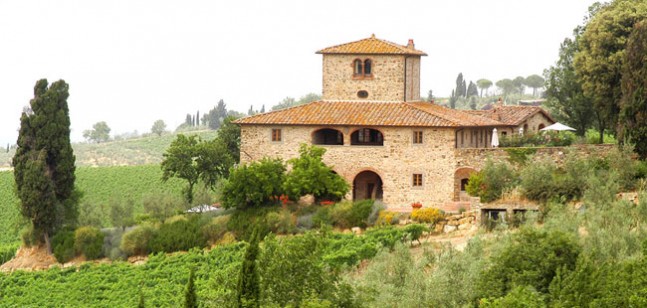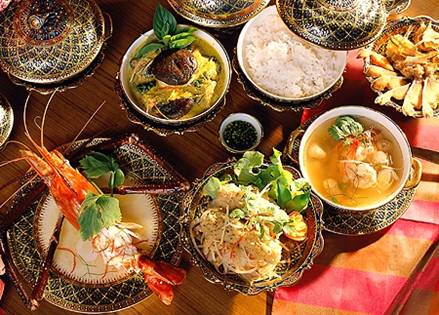 A hankering for the flavors of Chianti has Curtis Marsh planning a trip. In the meantime, he makes do in Wellington Street.
A hankering for the flavors of Chianti has Curtis Marsh planning a trip. In the meantime, he makes do in Wellington Street.
The best laid plans. Everything was set for the archetypal autumn holiday in Italy, two weeks in the heart of Tuscany luxuriating in the 18th-century Villa Pecille, in an idyllic vineyard panorama on the Chianti Azienda (estate) Fontodi, just south of the medieval village Panzano, halfway between Florence and Sienna.
It would have been late-October, with the legions of European summer tourists relishing the sweltering heat all but disappeared, life returning to its utopian tranquility, although never losing that uniquely Italian chaos.
The last of the olives would have been picked and the grape harvest over, the sap retreating in the vines, the withering leaves transforming the lush green undulating hills of Chianti to a picturesque mosaic of autumnal reds, ambers, golden yellows, fading to copper, bronze and ochre against an empyreal blue sky.
This would have been nirvana for a freelance wine and lifestyle writer and at the same time present a conundrum, the line between leisure and work a constant blur. Careful scheming would be required to camouflage winery visits and travel assignments. Of course, my wife saw straight through it all but chose to turn a blind eye, having already sanctioned the travel plan. I felt she was secretly excited to be revisiting Florence and Sienna, reminiscing in her student days, when she last travelled through these parts.
Even my three-year-old daughter was on side, the promise of unlimited olives, grissini, prosciutto, Parmesan cheese, pizza and spaghetti appealing to her already insatiable Tuscan appetite.
Rarely does one achieve such consensus on family holiday destinations; indeed, it was all too good to be true. Suddenly, there appeared all number of reasons not to go, some insurmountable. Capitulation was unavoidable. We shall have to wait for next autumn.
However, it is not too late for a congenial Tuscan expedition with the months of November and December, while not poolside weather, delightful. Moreover, it’s the season conducive to snug fireside evenings and hearty dinners of casseruola cinghiale (wild boar casserole) paired with an earthy, muscular Chianti Classico Riserva.
The Azienda Agricole Fontodi is highly respected by the global wine trade for both its wines and accommodation; visit www.fontodi.com or email proprietor Giovanna Manetti at larota@fontodi.com. The Fontodi wines are available in Singapore through NK Yong nkyong@pacific.net.sg
 Needless to say, I have been craving a good bottle of Chianti Classico, with an emphasis on “good” and “classico.” I say “good” as the very name Chianti can invoke skepticism, doubtless that some of you have experienced very ordinary Chianti in the past. While it is unlikely you will encounter the dubious ratafia covered bottles of old (avoid if you do), Asia has become a dumping ground for lean and mean, headache-inducing Chianti (accentuated by adverse shipping and storage conditions), ubiquitously claiming supermarket shelf space or extortionately exploited on restaurant wine lists.
Needless to say, I have been craving a good bottle of Chianti Classico, with an emphasis on “good” and “classico.” I say “good” as the very name Chianti can invoke skepticism, doubtless that some of you have experienced very ordinary Chianti in the past. While it is unlikely you will encounter the dubious ratafia covered bottles of old (avoid if you do), Asia has become a dumping ground for lean and mean, headache-inducing Chianti (accentuated by adverse shipping and storage conditions), ubiquitously claiming supermarket shelf space or extortionately exploited on restaurant wine lists.
This predicament unjustly maligns the dedicated top producers of Tuscany who have been resolute in their reformation over the past decades, having redefined the noble indigenous sangiovese grape through rigorous clonal selection and pairing to specific vineyard soils and micro-climates, along with greatly enhanced winemaking.
The best wines within the delimited zones of Chianti Classico are now invariably 100 percent sangiovese, rescinding outdated traditions of blending trebbiano (up to a permissible 15 percent of this white grape) to soften the inherently tough and assertive tannins of sangiovese. The indigenous red grape canaiolo (up to 15 percent permissible) with its juicy-soft fruit also forms part of this contrived formula, bolstering the dilution effect of the white and adding color as well as modulating the sharp acidity, normally a result of unripeness and overcropping.
Further manipulation and a predilection to internationalise and popularize Chianti saw the addition of French varieties such as cabernet sauvignon, merlot and syrah become vogue, closing in on the new world ranks.
That is not to say sangiovese should be the exclusive performer. A good example, as clearly ratified by super- Tuscan producers, is the universally acclaimed Castello di Fonterutoli, particularly the Siepi 50-50 blend of sangiovese and merlot (found at Watson’s Wine Cellars www.watsonswine.com).
But the tug of war continues between the international faction cajoling the points-chasing market, and those championing the authenticity of sangiovese, cherishing its birthplace, congenitally high tannins and robust charm. Personally, I support the latter and correlate it with the Slow Food movement www.slowfood.com with its strong undercurrent of preserving cultures and passion for the recreational leisure of wine and food.
Clearly, the Chianti Classico are food wines, with the tannins persistent from start to finish, travelling right across the palate with a cleansing mouth-puckering dryness. As a point of tannin-reference or comparison, the grape tannins in pinot noir can be so fine and integrated that they are hardly noticeable in its silky texture and sweeter profile until tail end. Sangiovese tannins also carry signature flavonoids reminiscent of Chinese black teas, along with flavors of dried wood and leather, tending to finish with the pleasant bitterness of walnuts and chestnuts.
Contrary to its robust framework, Chianti Classico is elaborately perfumed, redolent in wild berries, dark cherry, mulberry, blueberry and plums. The interaction on the palate however is accented in the sour components of these fruits – sour in a positive manner. I relate this to the dried sour plums that the Chinese eat or seng tee (sour-sweet in Hokkien dialect).
My Tuscan gratification finally came, strange as it may sound, at Yung Kee Restaurant in Wellington Street, Central. The standout wine on its list in every respect is a stellar Tuscan vintage perfectly suited to the food: the Fattoria di Felsina Berardenga Chianti Classic 2001, a relative bargain at HK$380. It is a sublime match with Yung Kee’s soy goose or braised pigeon in soya bean with double boiled mushroom soup to savor on the side.
Revisiting this wine many times (as there seems to be an never-ending supply of 2001), it is consistently fabulous; intoxicating in its bouquet – an intricate crescendo of Chinese black tea, earthy forest floor and cedar wood, bramble patch, wild mushrooms, dried herbs, iron ore mineral nuances among dark cherries, mulberries and hints of rose petal.
The palate is a labyrinth of flavors, piercing in sour fruits and dried mandarin peel upon entry, and then becoming juicier with black cherry and blueberry sweet-and-sour sensations. Liquorice, tar and soy appear, transcending to powerful, gripping tannins, ever-present yet smooth and incredibly elegant; indelible acidity propels the lingering sourness with a twist of walnut bitterness and balsa wood dryness (HK$282 – S$67 through Ponti Wines, both Hong Kong and Singapore www.ponti-fwc.com).
Alas, I have run out of space to cover Felsina’s most important wine, the Riserva Rancia. However, I shall quote Nicholas Belfrage from his excellent book Brunello to Zibibbo – The Wines of Tuscany, Central Italy and Southern Italy (Faber and Faber):
“Riserva Rancia, surely one of the greatest sangioveses in absolute, having a personality and equilibrium all of its own. Earthy yet elegant, complex yet fine.” And it’s Chianti Classico – one of the first to match Montalcino in expressing the full potential of Tuscany’s own grape.
Discover more about Felsina at www.felsina.it
This article was publish in The Standard Newspaper, Hong Kong. All Rights Reserved.
|
|
Tweet |





3 Comments to Not too late for Tuscany | Comments Feed
Now that’s sbulte! Great to hear from you.
Knowledge wants to be free, just like these atrilces!
http://www.nakuwine.com How about this website? any good choices here? I like your article!
The comments are closed.